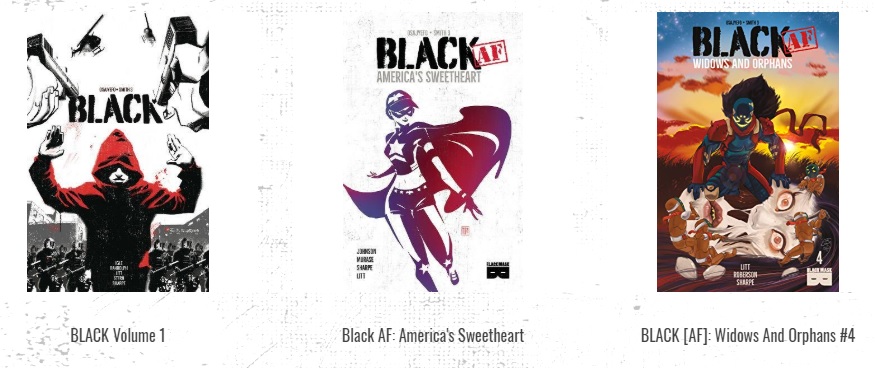
Black plays with history, both its relevance and its erasure.
A collaborative effort between creator and writer Kwanza Osajyefo, Tim Smith 3, Jamal Igle, Khary Randolph and Sarah Litt, Black is a Kickstarter success story and is now available on Amazon and ComiXology. Black’s premise starts with: what if only Black people had super-heroic abilities? The main protagonist of this comic, Kareem Jenkins, is shot and killed by the police, but comes back to life and realises he’s part of a small group of Black people with superpowers. To protect themselves and society, they have kept these powers a secret. The comic deals frankly with police brutality, institutionalized racism and the dangers of military technology developed by private companies in late stage capitalism. Black is like a re-write of the X-Men, if the X-Men weren’t a failed (racial) allegory using white people to depict a race prosecuted by a state apparatus the oppressed are trying to protect. Black asks us, when you have power, can you use it? Is it safe to use power if you are not part of the dominant social group and not advancing the goals of that dominant group? And if it isn’t, is justice even possible?
At the Comics Studies Society conference in 2019, Matt Linton presented a paper “Visible Man: The Visual (Re)Presentation of Trauma in Black.” It eloquently discussed how Black plays with history, both its relevance and its erasure. By centralizing a Black character, who resists the status quo, the comic disrupts genre conventions as most superheroes are inherently conservative: white men and women who fight to preserve the status quo against supervillains and alien invaders.
The covers for Black are black and white artworks with red accents, and have been known to spark controversy, especially the covers for Chapter Two and Chapter Three. Black’s art is mostly grey, black and white and is beautifully rendered, with uniquely designed characters that feel real and a nice variety of body-types. There’s real skill in the drawn details, facial expressions and costume design. The action scenes especially are really impressive, with fast switches of perspective and angles without losing coherency.
Black’s reception has been, predictably, mixed. Some on social media have called it divisive and racist, but there has also been a great outpouring of support from various audiences. As Kwanza Osajyefo said in interview with Syfy.com’s Karama Horne, “It’s been 90 percent love for Black from, you know, people who come across the idea and that was very much Black people.” Because of Black’s enormous success, 2017 saw the release of Black AF: America’s Sweetheart, which focuses more on Black conservatism, while the Kickstarter for the sequel, White recently wrapped up and far exceeded its original goal.
Black is an amazing read and I whole-heartedly recommend it to everyone.
Written by Esther De Dauw
